您好,登录后才能下订单哦!
数据安全
这些都是靠人的想象和直觉来涉及的,非常不靠谱,而现代计算机加密:
总结
一、什么是URL编码?
URL编码是浏览器发送数据给服务器时使用的编码。
什么是编码?
ascii码就是一种编码,例如
| 字母 | 编码(16进制) |
|---|---|
| A | 0x41 |
| B | 0x42 |
| C | 0x43 |
| D | 0x44 |
| ... | ... |
| 汉字 | Unicode编码 | UTF-8编码 |
|---|---|---|
| 中 | 0x4e2d | 0xe4b8ad |
| 文 | 0x6587 | 0xe69687 |
| 编 | 0x7f16 | 0xe7bc96 |
| 码 | 0x7801 | 0xe7a081 |
| ... | ... | ... |
URL编码规则是什么?
例子
/**
* URL编码
*/
public class SecURL {
public static void main(String[] args) throws UnsupportedEncodingException {
String original = "URL 参数";
String encoded = URLEncoder.encode(original,"UTF-8");
System.out.println("编码后:"+encoded);
String ori = new String(URLDecoder.decode(encoded,"UTF-8"));
System.out.println("解码后:"+ori);
}
}
总结
二、Base64编码
* 什么是Base64编码?
是一种把二进制数据用文本表示的编码算法,例如:byte[]{0xe4,0xb8,0xad} ==> "5Lit"
| 索引 | 编码 | 索引 | 编码 | 索引 | 编码 |
|---|---|---|---|---|---|
| 0 | A | 26 | a | 52 | 0 |
| 1 | B | 27 | b | 53 | 1 |
| 2 | C | 28 | c | ... | ... |
| 3 | D | 29 | d | 61 | 9 |
| ... | ... | ... | ... | 62 | + |
| 25 | Z | 51 | z | 63 | / |
目的
/**
* Base64编码
*/
public class SecBase64 {
public static void main(String[] args) throws Exception {
String original = "Hello\u00ff编码测试";
//withoutPadding()可以去掉编码后“=”这个字节,有没有=对于解码来说没有影响
String b64 = Base64.getEncoder().withoutPadding().encodeToString(original.getBytes("UTF-8"));
System.out.println(b64);
String ori = new String(Base64.getDecoder().decode(b64), "UTF-8");
System.out.println(ori);
}
}
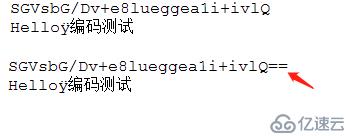
由于标准的base64在url中会引起冲突,所以在url中使用base64编码会使用另外一种。
在java中,使用url的base64编码它会把“+”变为“-”,把“/"变为“_”这样在传递url参数的时候不会引起冲突
总结
一、什么是摘要算法?
摘要算法是一种能产生特殊输出格式的算法,这种算法的特点是:无论用户输入多少长度的原始数据,经过计算后输出的密文都是固定长度的,只要原数据稍有改变,输出的“摘要”便完全不同,因此,基于这种原理的算法便能对数据完整性提供较为健全的保障。
常用的摘要算法主要有MD5和SHA1。D5的输出结果为16字节(128位),SHA1的输出结果为20字节(160位)。
摘要算法(又称哈希算法/数字指纹)
* 计算任意成都数据的摘要(固定长度)
目的:
例如:
输入:任意长度的数据(byte[])
输出:固定长度的数据(byte[n])
hash("hello") = 0x5e918d2
hash("hello,java") = 0x7a9d88e8
hash("hello,bob") = 0xa0dbae2f
Java的Object.hashCode()方法就是一个摘要算法
这就是说相同的输入必须得到相同的输出,当我们重新equals()方法的时候也要同时重新hashCode()方法
什么是碰撞?
两个不同的输入得到了相同的输出
例如:
hash("abc") = 0x12345678
hash("xyz") = 0x12345678
这个时候我们就说发生了碰撞,碰撞能不能呢,碰撞是不能避免的。
输出的字节是固定的,而输入的字节是不确定的
| 输出n bits | 范围 |
|---|---|
| 0000000000 | 0 |
| 0000000001 | 1 |
| 0000000010 | 2 |
| ... | ... |
| 11111111111 | 62235 |
Hash算法的安全性?
常用摘要算法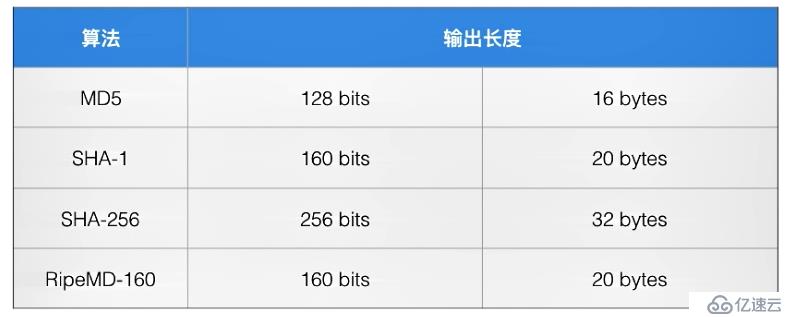
彩虹表
什么是彩虹表呢?是一个预先计算好的常用的字符和md5的一个对照表。
抵御彩虹表
public static void main(String[] args) throws Exception{
String str = "MD5摘要算法测试";
byte[] bytes = toMD5(str.getBytes("UTF-8"));
//以16进制的方式,打印出byte数组
System.out.println(String.format("%032x",new BigInteger(1,bytes)));
}
public static byte[] toMD5(byte[] input){
MessageDigest md;
try {
md = MessageDigest.getInstance("MD5");
}catch (Exception e){
throw new RuntimeException(e);
}
md.update(input);
return md.digest();
}
public static void main(String[] args) throws Exception{
String password = "helloworld";
String salt = "Random salt";
byte[] bytes = toMD5((salt+password).getBytes("UTF-8"));
//以16进制的方式,打印出byte数组
System.out.println(String.format("%032x",new BigInteger(1,bytes)));
}
public static byte[] toMD5(byte[] input){
MessageDigest md;
try {
md = MessageDigest.getInstance("MD5");
}catch (Exception e){
throw new RuntimeException(e);
}
md.update(input);
return md.digest();
}
二、SHA-1
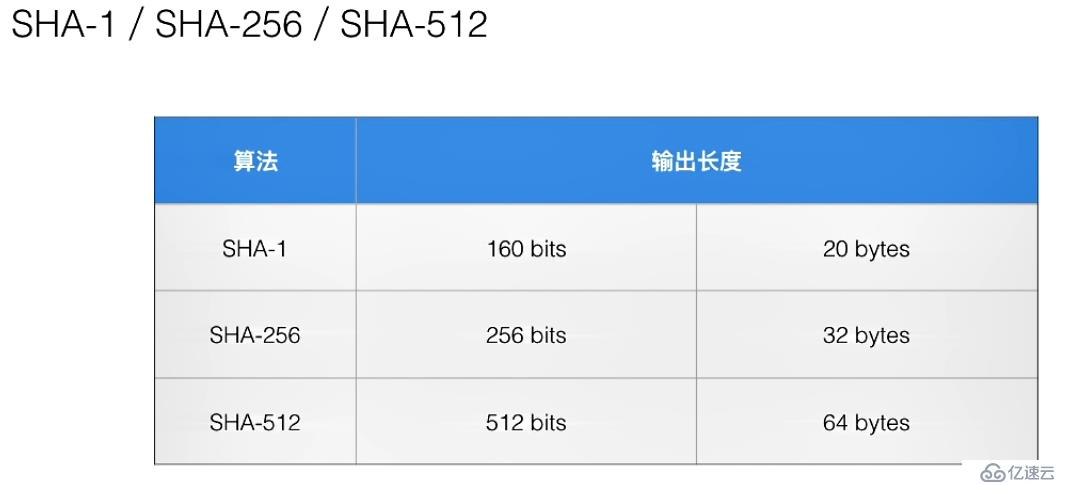
例子:同md5
public static void main(String[] args) throws Exception{
String str = "MD5摘要算法测试";
byte[] bytes = toMD5(str.getBytes("UTF-8"));
//由于SHA-1输出是40个字节,所以用%040x来表示输出
System.out.println(String.format("%040x",new BigInteger(1,bytes)));
}
public static byte[] toMD5(byte[] input){
MessageDigest md;
try {
md = MessageDigest.getInstance("SHA-1");
}catch (Exception e){
throw new RuntimeException(e);
}
md.update(input);
return md.digest();
}jdk并未包含RipeMD160算法,需要单独下载jar包放入jdk中
三、BouncyCastle
如何使用第三方提供的算法?
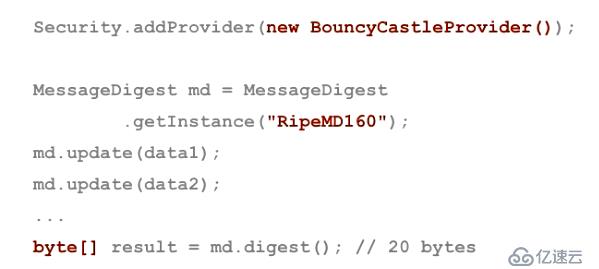
四、Hmac
Hmac:Hash-based Message Authentication Code
更安全的消息摘要算法
HmacMD5可以看做带安全Salt的MD5
public class Hmac {
public static byte[] hmac(String hmacAlgorithm, SecretKey skey,byte[] input)throws Exception{
Mac mac = Mac.getInstance(hmacAlgorithm);
mac.init(skey);
mac.update(input);
return mac.doFinal();
}
public static void main(String[] args) throws Exception {
String algorithm = "HmacSHA1";
//String algorithm = "HmacSHA256";
//原始数据
String data = "hello world";
//随机生成一个key
KeyGenerator keyGen = KeyGenerator.getInstance(algorithm);
SecretKey skey = keyGen.generateKey();
//打印key
byte[] key = skey.getEncoded();
BigInteger bigInteger = new BigInteger(1, key);
System.out.println("Key:"+bigInteger.toString(key.length/2));
//用这个key计算
byte[] result = hmac(algorithm,skey,data.getBytes("UTF-8"));
BigInteger resultInteger = new BigInteger(1, result);
System.out.println("Hash:"+resultInteger.toString(result.length/2));
}
}
总结:
一.什么是对称加密算法
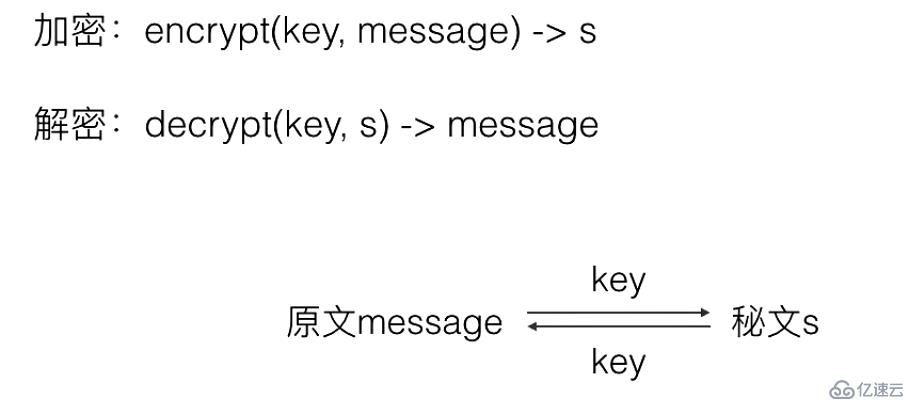
二、常用的加密算法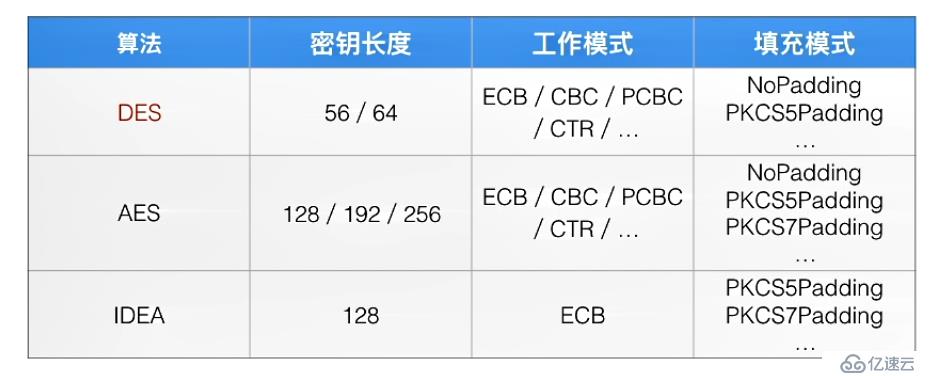
它们的密钥长度各不相同,密钥长度决定了加密的强度。工作模式和填充模式可以看做是加密算法的参数和格式的选择,jdk提供的算法并没有提供所有的工作模式及填充模式。
des算法因为密钥果断可以在短时间内暴力破解,已经被淘汰
免责声明:本站发布的内容(图片、视频和文字)以原创、转载和分享为主,文章观点不代表本网站立场,如果涉及侵权请联系站长邮箱:is@yisu.com进行举报,并提供相关证据,一经查实,将立刻删除涉嫌侵权内容。